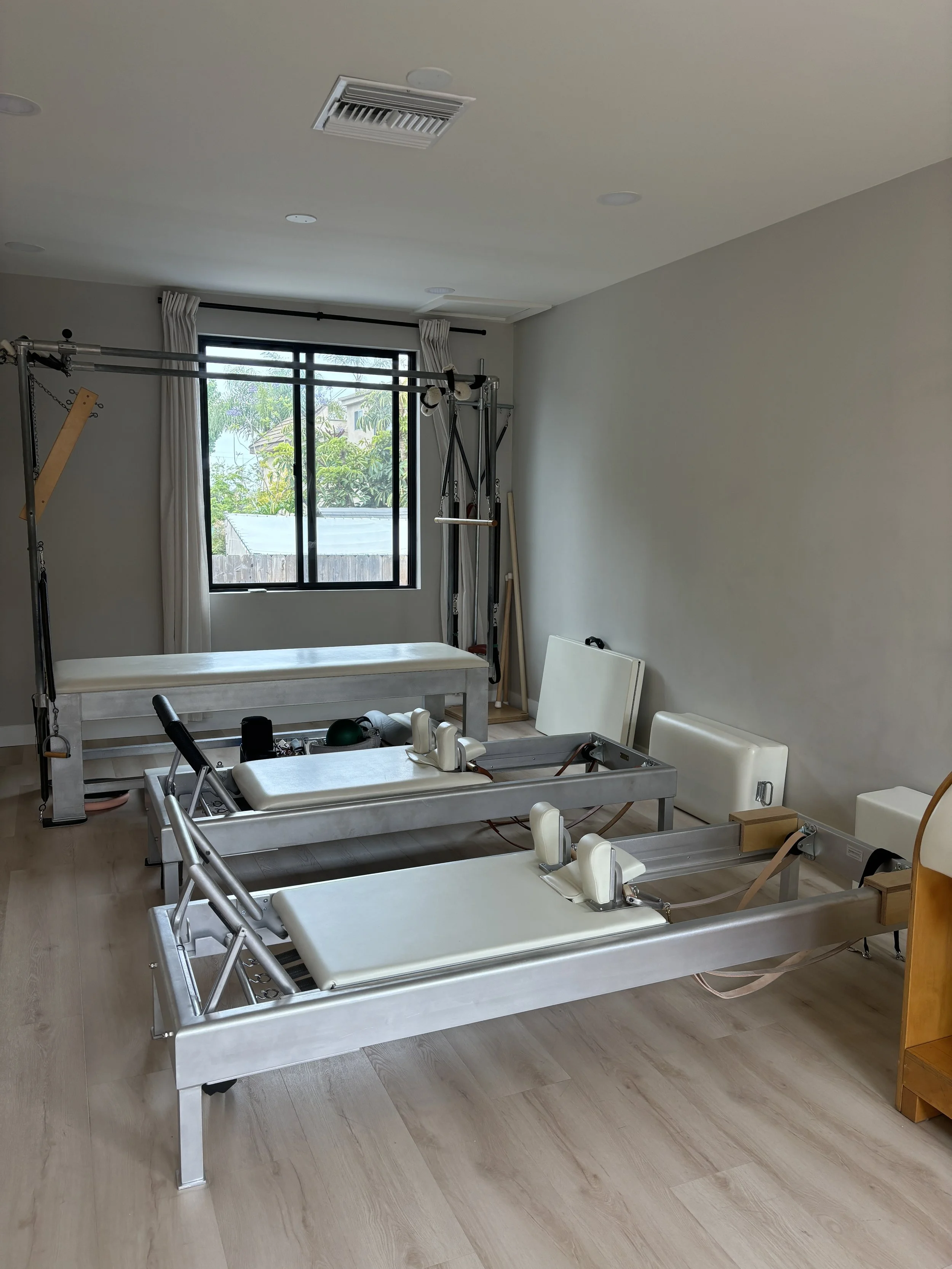Universal Reformer v Archival Reformer (and my thoughts on Gratz Pilates v Pilates Designs Reformers)
I recently acquired an archival classical reformer and have been getting some questions on my thoughts between the Universal and the Archival reformers. I have a mixture of classical equipment in my studio - ranging from Contrology to Pilates Designs to Gratz Pilates. Today we’ll be looking at the differences between all of my reformers. I currently own… 1) Universal Gratz 80” Reformer from 2015 2) Pilates Designs Universal Reformer Tower Units from 2022 3) Pilates Designs Archival from 2025. I’ve also worked on the Gratz Archival and Contrology Reformers, so I do have some thoughts on these apparatus.
Here are the biggest differences I’m noticing between my Universal Reformers and my Archival Reformers.
Denser Padding
The padding on the archival reformer is significantly more dense and firm than the Universal reformer. I find you can really find your alignment due to the stiffness. It has no give, so you feel every twist and side bend along the carriage. Even with the box with the same dense padding, I find you have to lift even more up and out of the machine, versus sinking into the padding. Some clients may find this too rigid, especially those with sensitive tailbones or particularly bony or sensitive spines. Here is my personal ranking of all the reformers. In order of MOST padding to LEAST padding - Gratz Universal, Pilates Designs Universal, Gratz Archival, Pilates Designs Archival, Contrology (similar to PD Archival, in my opinion).
Shorter Shoulder Blocks (and different shape!)
The universal reformer’s shoulder blocks have a more uniform shape (likely due to the padding), whereas the archival apparatus has more of a “claw foot” shape, where it indents to mold to the shape of the arch of the foot. There is a larger gap between the carriage and the shoulder block (due to lighter padding) on the archival reformer, and the shoulder blocks are generally shorter and set lower. This helps during exercises like frogs/leg circles - especially for taller clients - to get the legs lower. Additionally, below the shoulder blocks, there is a larger indent to really press your heels below the padding to increase the stretch through the back of leg in exercises like elephant or long back stretch. All the archivals and Contrology reformers have this.
Lower Footbar + No Cover
The archival reformers have a lower footbar, with a lower kickstand. During an exercise like footwork, your feet are even lower than normal, which should help you open your hips more and access more of your posterior chain. The gear bar is indented to sit lower to accommodate a lower footbar. The archival reformer also has no footbar cover, forcing you to lift OUT of your wrists and giving you a narrower surface area to grip onto. The lack of padding can be too rigid for some clients, especially older clientele who lose padding in their hands as they age. You can always add pads underneath their hands as needed. All the archivals and Contrology reformers have this.
Original Dimensions 80” v 86”
The original dimensions of the reformer was 80” but, you cannot use a jumpboard for this reformer. Most brands now sell the “archival” set up in the lengthened 86” to accommodate taller clients. I find the 86” to be the most versatile machine but personally prefer the 80” on my 5’5” body!
Hopefully, this post helped assess which version of a classical reformer you’d like to purchase. I find that having a variety of different options (both in length, padding etc) gives me the most versatility as a teacher. If I were to start all over again, I would personally buy a Gratz Archival Reformer for group classes (my personal favorite for an “in between” experience) and an 80” Archival Pilates Designs reformer for personal use.

